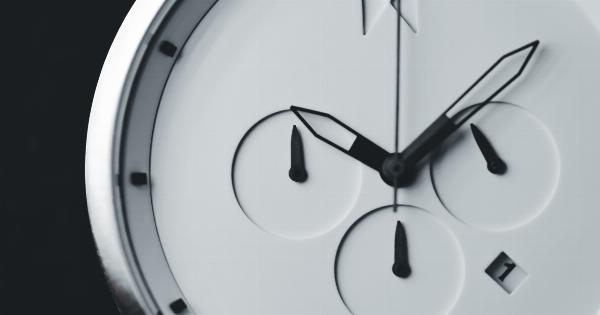Short-sightedness, also known as myopia, is a common visual problem that affects a significant percentage of the population worldwide.
Individuals who are short-sighted find it difficult to see objects clearly at a distance, but can still see objects that are closer to them. While it may initially seem like a minor inconvenience, short-sightedness can actually be a major bane to daily habits.
Impact on Vision and Eye Health
Short-sightedness can have a significant impact on an individual’s vision and eye health. Those who are short-sighted are more prone to eye strain, headaches and other visual-related problems.
Furthermore, being short-sighted also increases an individual’s risk of developing more severe eye conditions such as cataracts, glaucoma and retinal detachment.
Interference with Daily Activities
Short-sightedness can greatly interfere with daily activities such as driving, watching television or even reading. Individuals who are short-sighted may find it difficult to read road signs while driving or watching the television from a distance.
Furthermore, they may have to constantly strain their eyes to read books or use their phones or computers which can lead to eye fatigue and discomfort.
Social and Professional Limitations
Aside from medical and daily activity-related problems, being short-sighted can also lead to social and professional limitations.
Individuals with short-sightedness may feel self-conscious about their appearance if they wear glasses or contact lenses, which can lead to lower self-esteem and confidence. Furthermore, those with severe myopia may not be able to partake in certain professions or participate in certain sports activities, restricting their occupational and leisure opportunities.
Treatment Options
While short-sightedness cannot be cured, it can be managed effectively through various treatment options. The most common treatment options include eyeglasses, contact lenses, and refractive surgeries such as LASIK or PRK.
Eyeglasses are generally the most inexpensive and simplest solution, while contact lenses and refractive surgeries require more in-depth evaluation and follow-up care.
Prevention Measures
While it is not always possible to prevent myopia, taking certain measures can help reduce its incidence or progression. Encouraging children and teenagers to spend more time outdoors has been linked to a lower occurrence of myopia.
Furthermore, practicing good eye hygiene such as taking regular breaks while reading, using proper lighting and maintaining a healthy diet can contribute to good eye health.
Conclusion
Short-sightedness may initially seem like a minor inconvenience, but it can have far-reaching consequences on an individual’s daily habits and quality of life.
It is essential to recognize the symptoms, seek treatment if necessary, and take preventative measures to maintain good eye health.




























